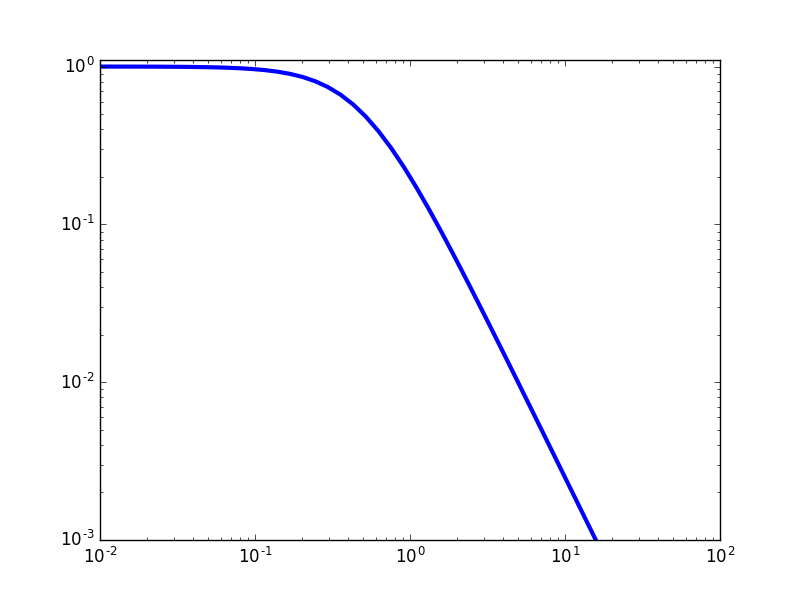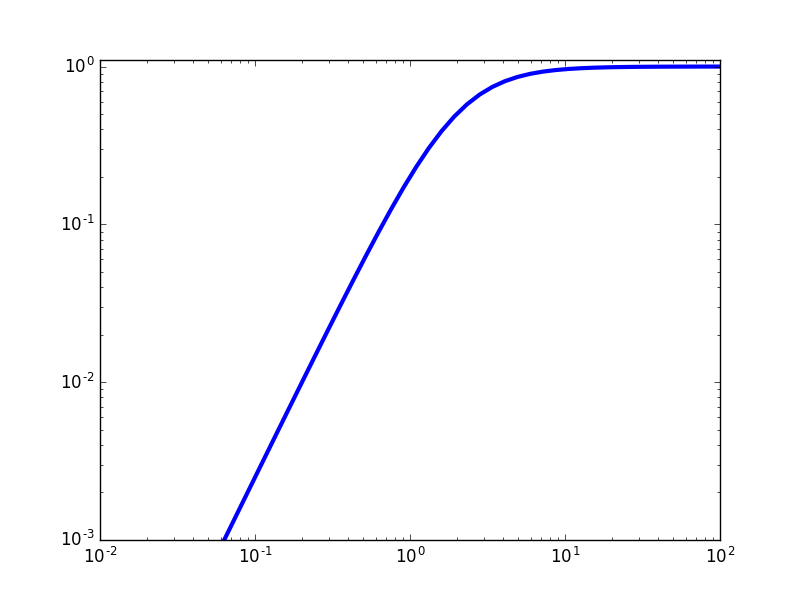5.3.2. Transforming Filters¶
\(\renewcommand{\w}{\omega}\)
5.3.2.1. Shifting Frequencies¶
We start with a first order low pass filter with transfer function:
It’s frequency response is:
and the absolute value:
For \(\w\gg1\) we have \(\log|H(j\w)|-\log\w\) and for \(\w\ll1\) we have \(|H(\w)|=0\). The corner frequency thus is \(\w_c=1\).
We can shift the corner frequency to \(\w_c\) by substituting \(\w/\w_c\) for \(\w\), then:
In the \(s\)-domain we have:
5.3.2.2. From Low to High Pass¶
We start with a low pass filter with transfer function \(H(s)\). As a specific example we take:
This is a first order low pass filter. It’s frequency reponse is:
and the absolute value is:
Plotting this frequency transform we get

This simple low pass filter can be transformed to a high pass filter by substitution of \(j\omega\leftarrow1/(j\omega)\). Note that on a logarithmic scale for the frequencies we clearly see the inversion of the frequencies. So we get:
Its frequency response (for \(\tau=1\)) is sketched below:
